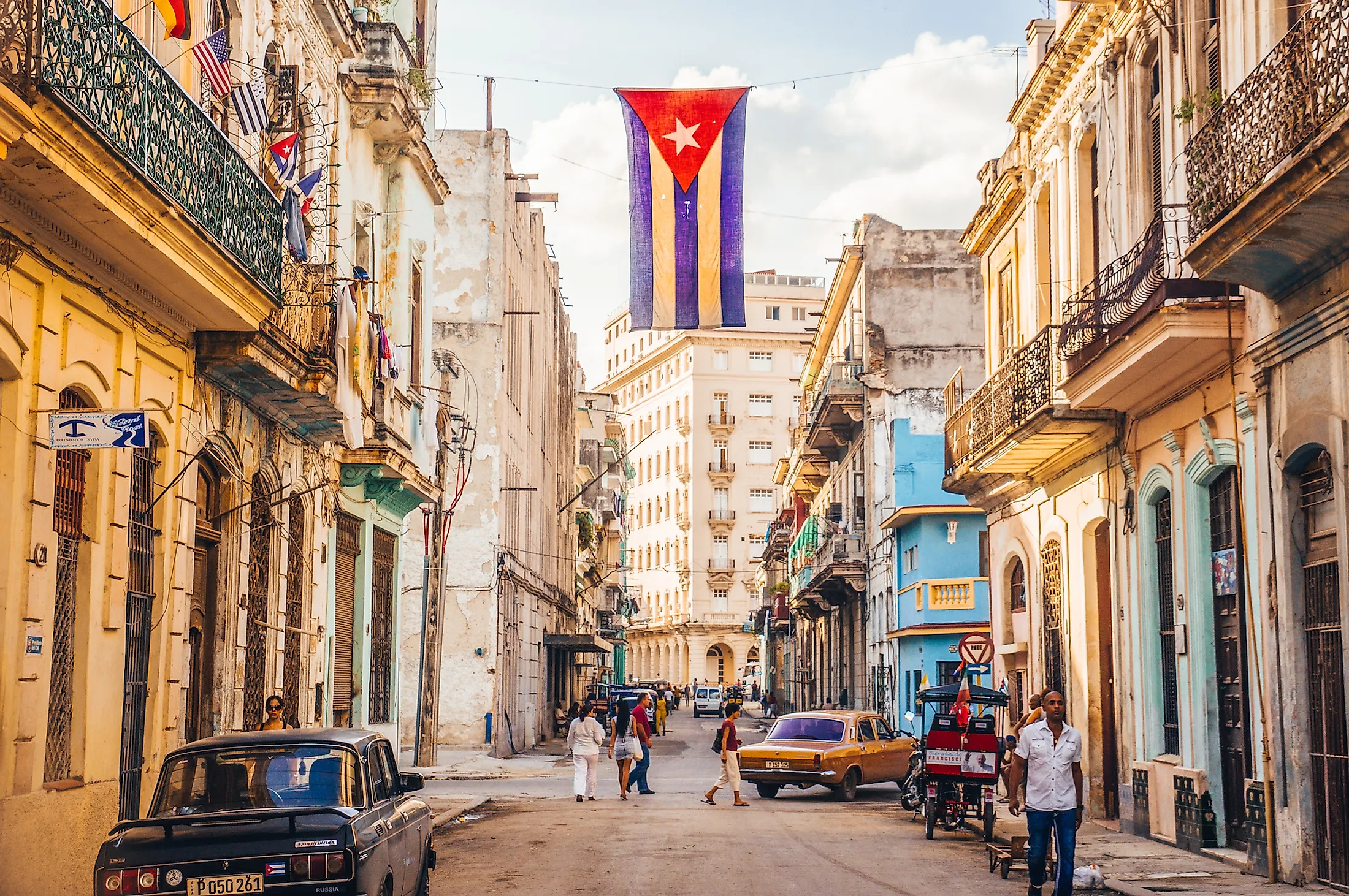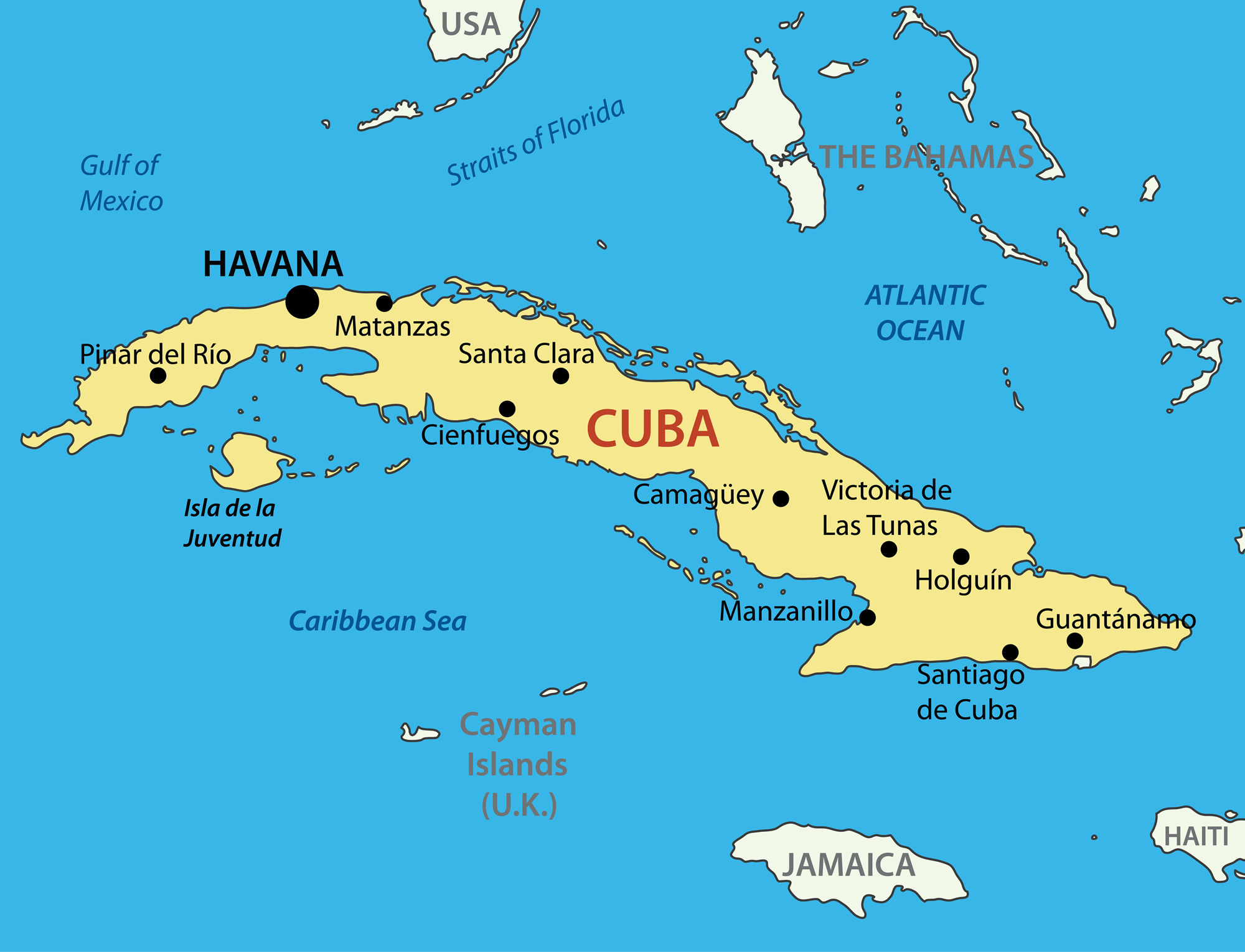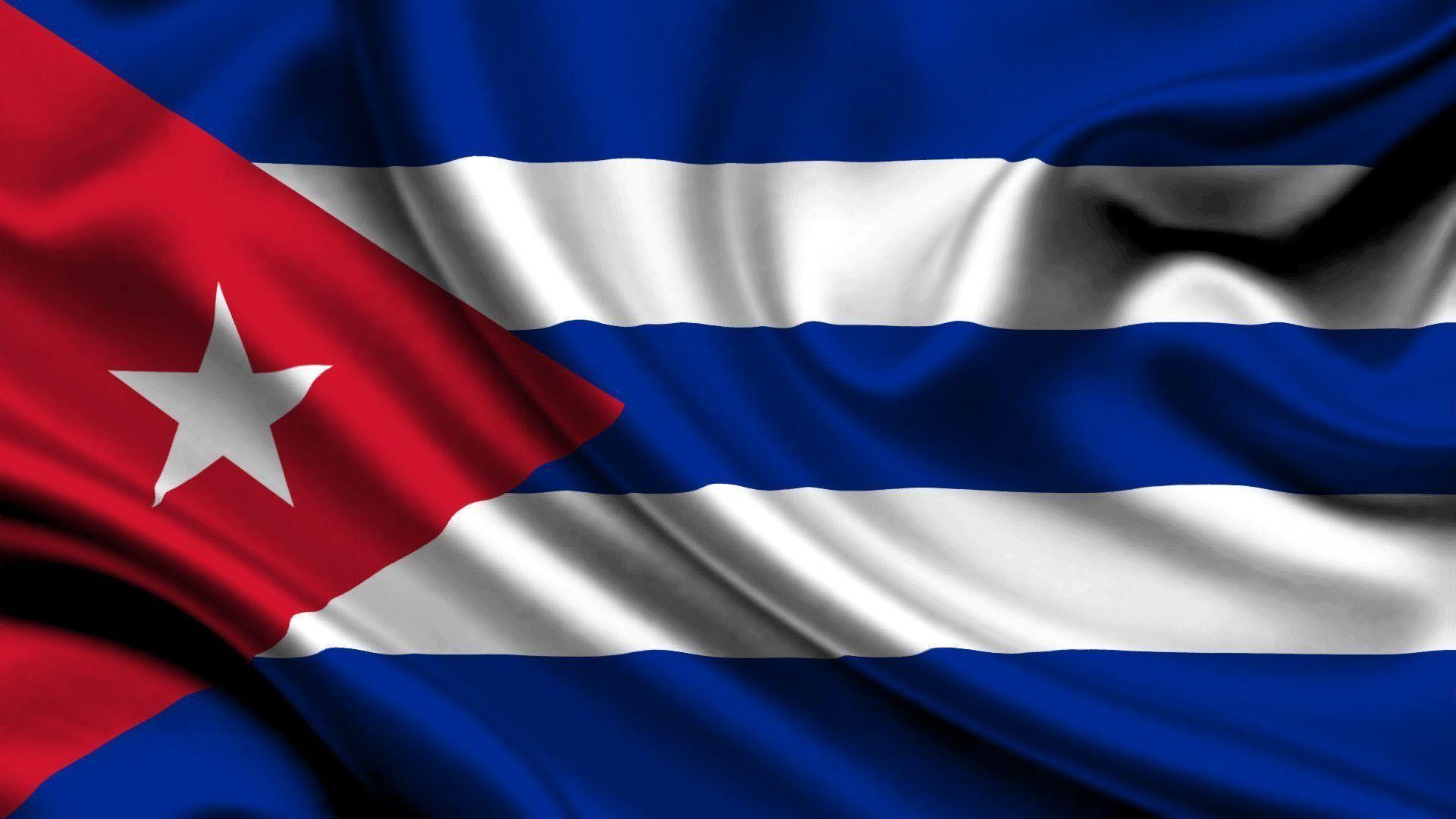Have you ever wondered exactly where is Cuba located on the world map? Perhaps you've seen pictures of its stunning beaches or heard tales of its vibrant culture, and a curiosity sparks about its precise spot. Well, you're not alone. Many people, honestly, find themselves pondering the geographical home of this captivating island nation, a place that holds a truly unique position in the grand scheme of things.
This island country, officially known as the Republic of Cuba, is, in a way, much more than just a single piece of land. It’s a collection of many islands, big and small, all nestled together in a very specific part of the world. Understanding its geography helps us appreciate so much about its character, its history, and even its daily rhythms. It's a rather fascinating study, actually.
Today, we're going to take a closer look at just where this incredible country sits, exploring its main components and the significant bodies of water that surround it. You'll see, its location is, in some respects, a key to understanding why Cuba is, well, Cuba. So, let's get into the details of this Caribbean gem.
Table of Contents
- Understanding Where Cuba Is
- A Caribbean Gem
- Its Place on the Map
- The Island's Neighbors
- Cuba's Geographical Makeup
- The Main Island and Its Companions
- Size and Scale
- A Confluence of Waters
- Why Cuba's Location Matters
- Historical Importance
- Environmental Considerations
- Travel and Exploration
- Common Questions About Cuba's Spot
- FAQs
Understanding Where Cuba Is
A Caribbean Gem
Cuba, officially known as the Republic of Cuba, is, you know, an island country. It presents itself as a landmass completely surrounded by the vastness of the sea. It sits right there in the warm, inviting waters of the Caribbean Sea, which is, in a way, its most basic description, but it tells you a lot about its sunny disposition and tropical vibes. This makes it a quintessential part of the Caribbean region, a place often associated with sun-drenched shores and clear blue waters.
It's very much a part of the broader area known as the West Indies, specifically positioned in the western portion of that chain of islands. So, when people talk about the Caribbean, Cuba is definitely a big, big part of that picture. Its presence there, basically, defines a significant portion of the northern Caribbean landscape, making it a prominent feature in the region's overall geography.
Its Place on the Map
When you look at a detailed map, you'll see Cuba located quite strategically, actually. It's found in the north-western part of the Caribbean, a spot that gives it a truly unique geographical advantage. This position is pretty special because it's where three major bodies of water sort of come together, creating a distinct watery embrace around the island.
You have the vast, open expanse of the Atlantic Ocean to its north, the warm, familiar waters of the Caribbean Sea itself to its south, and the expansive Gulf of Mexico all meeting up around this island nation to its west. This unique intersection, well, it gives Cuba a truly distinct geographical identity, shaping its climate, its marine life, and even its historical interactions with other nations. It's a rather busy watery crossroads, in some respects.
The Island's Neighbors
Being situated in the heart of the Caribbean, Cuba naturally has some interesting neighbors, though the provided information doesn't explicitly list them by name. Its geographical position, however, implies a certain closeness to the southern tip of Florida in the United States, the Yucatán Peninsula of Mexico, the island of Jamaica, and the numerous islands of the Bahamas. These nearby landforms are, basically, all part of its broader regional context.
This geographical closeness, honestly, has played a very big part in Cuba's intricate history and its cultural connections over the years. The sea lanes around Cuba have been routes for trade, exploration, and, at times, conflict, making its location a focal point for many regional developments. It's almost as if its position dictates a constant interplay with its surrounding areas.
Cuba's Geographical Makeup
The Main Island and Its Companions
So, when we talk about Cuba, we're not just talking about one big landmass, you know? The country itself is comprised of the main island of Cuba, which is, indeed, the largest landform in the entire nation. Alongside this primary island, there's also the Isla de la Juventud, which is quite commonly known as the Isle of Youth, offering its own distinct character.
Beyond these two significant landforms, there are, apparently, a stunning 4,195 other islands, islets, and cays. These smaller land bits, basically, dot the waters surrounding the primary island, making up a truly extensive archipelago. This vast collection of land, small and large, contributes immensely to Cuba's diverse coastal environments and its rich marine ecosystems, creating a rather intricate geography.
Size and Scale
The main island of Cuba is quite substantial in its physical dimensions. It holds the distinction of being the largest island country you'll find in the entire Caribbean region, which is, honestly, a pretty big deal considering all the numerous islands scattered across that sea. Its sheer size makes it stand out prominently on any regional map, a true giant among its island relatives.
With an expansive area stretching over 44,000 square miles (that's about 114,447 square kilometers), it's a pretty big chunk of land to explore. And, get this, it's even considered the 17th largest island globally, which is, you know, quite impressive when you think about all the islands around the entire planet. This fact alone speaks volumes about its scale.
It's also, actually, the largest of the Greater Antilles, a significant group of bigger islands in the Caribbean that includes places like Hispaniola, Jamaica, and Puerto Rico. This means it stands out among its island relatives in terms of sheer size and geographical importance, solidifying its role as a dominant landmass in the region.
A Confluence of Waters
As mentioned earlier, Cuba's location is defined very much by its watery surroundings, a unique arrangement of major oceanic bodies. The warm, inviting Caribbean Sea washes its southern shores, providing a distinct tropical feel and influencing its climate. To its north, the vast, open expanse of the Atlantic Ocean stretches out, bringing different currents and weather patterns.
And then, to its west, you have the Gulf of Mexico, a large semi-enclosed sea that adds another dimension to Cuba's marine environment. This meeting point of such significant bodies of water means Cuba experiences a variety of marine environments, making it, in a way, a very diverse place for sea life, coastal activities, and even for understanding global oceanographic patterns. It's a rather dynamic watery embrace, basically.
Why Cuba's Location Matters
Historical Importance
Cuba's spot on the map has, very much, shaped its entire story through the ages. Being positioned at the crossroads of major shipping lanes and so incredibly close to both North and South America, it's been a focal point for many pivotal historical events. Its geographical reality has, basically, made it a coveted territory and a strategic asset for various powers throughout history.
Its strategic position has, honestly, made it a key player in regional politics and international trade for centuries. This geographical reality, you know, is deeply woven into the fabric of its past, influencing everything from colonial rule to modern-day diplomatic relations. It's almost impossible to discuss Cuba's history without acknowledging the profound impact of where it sits on the globe.
Environmental Considerations
The fact that Cuba is an island nation, surrounded by so many smaller landforms and various seas, means its environment is pretty unique and, in some respects, quite delicate. It's home to diverse ecosystems, both on land, with its rich flora and fauna, and in its extensive coastal waters, teeming with marine life. This island nature makes it a distinct biological hotspot.
Understanding where Cuba is located helps us appreciate its specific climate patterns, which are influenced by its tropical position and surrounding oceans. It also sheds light on its vulnerability to certain natural events, like hurricanes, which are a recurring feature of the Caribbean. The incredible biodiversity it supports is, basically, a direct result of its unique geographical setting, making it a rather important place for ecological study and conservation efforts.
Travel and Exploration
For anyone thinking about visiting this captivating destination, knowing where Cuba is located is, of course, the very first step in planning an adventure. Its Caribbean setting immediately brings to mind images of warm weather, beautiful beaches, and a distinct island culture that is truly one-of-a-kind. It's a place that promises a unique experience for travelers.
The source text even mentions "planning a visit to Cuba," which, honestly, highlights how its location is directly tied to the allure of tourism. People want to know where this fascinating island is so they can explore its seasons, its weather patterns, and its rich cultural calendar, ensuring they visit at the best time for their interests. It’s a very popular spot, you know, for those seeking something different.
Its position makes it relatively accessible from many parts of the Americas, and its island charm keeps people coming back. You can learn more about traveling to this amazing country on our site, and for a deeper look into its unique culture, check out our dedicated culture page. For general geographical information about the world, you might find WorldAtlas to be a useful resource.
Common Questions About Cuba's Spot
FAQs
Is Cuba located in the Caribbean Sea?
Yes, absolutely. Cuba is, in fact, an island country situated right there in the warm waters of the Caribbean Sea. It's a big part of the western West Indies, so you're right on the money with that one. Its entire identity is, basically, intertwined with this vibrant sea.
How big is Cuba compared to other islands?
Well, Cuba is quite large! It holds the title of the biggest island country in the entire Caribbean region. And, actually, when you look at islands globally, it ranks as the 17th largest island in the whole world, which is, you know, pretty significant. It's also the biggest of the Greater Antilles, which makes it stand out even more among its regional counterparts.
What bodies of water surround Cuba?
Cuba is, rather uniquely, at the meeting point of three major bodies of water. You've got the vast Atlantic Ocean to its north, the warm Caribbean Sea to its south, and the expansive Gulf of Mexico to its west. This confluence, basically, makes its location truly distinctive and influences much of its natural environment.
So, as you can see, understanding where Cuba is located gives us a much clearer picture of this remarkable island nation. It's not just a dot on the map; it's a strategically positioned landmass, rich in geographical detail and surrounded by significant bodies of water. Its status as the largest island country in the Caribbean, comprising the main island, Isla de la Juventud, and thousands of smaller cays, truly sets it apart.



